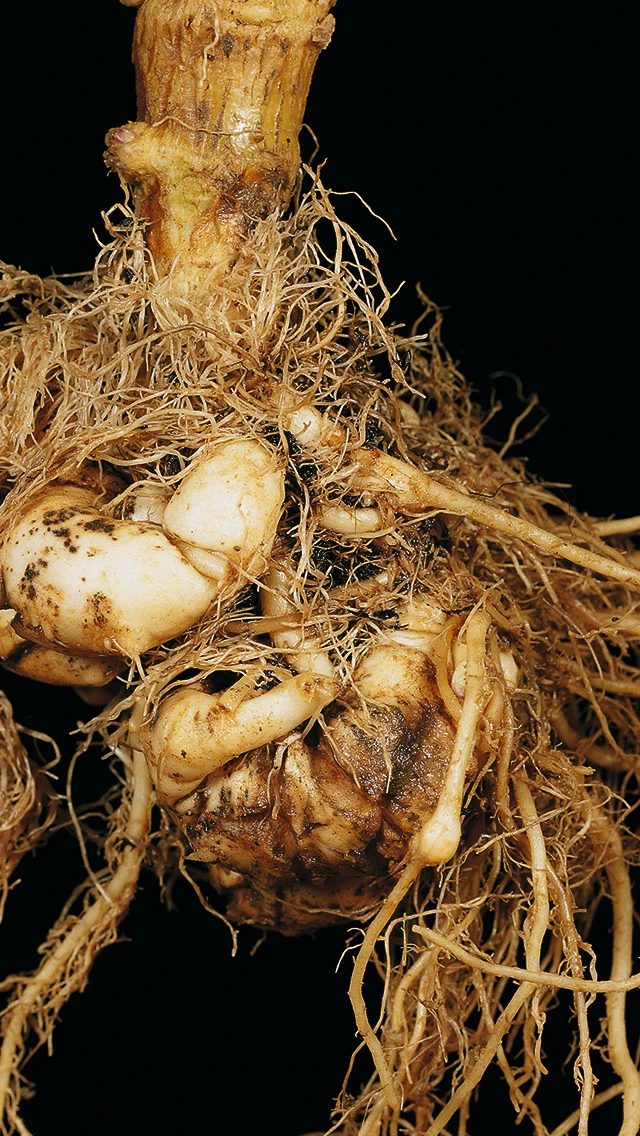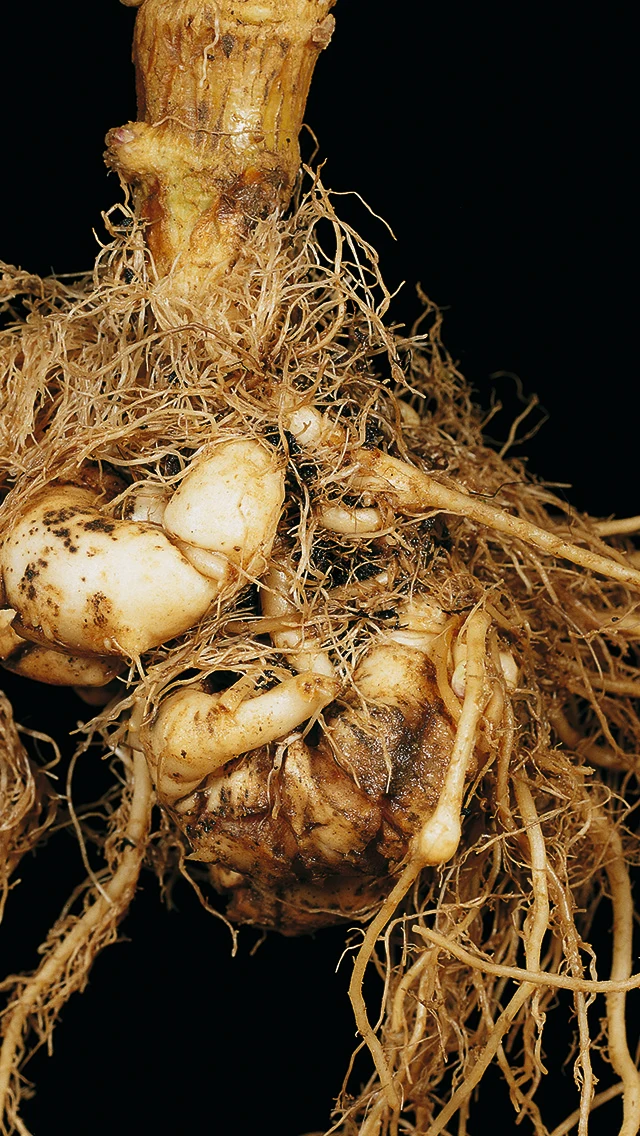
Club Root OSR
Plasmodiophora brassicae
Pathogen
Fungus
Hosts
Oilseed Rape and affects all cultivated brassicas as well as cruciferous weeds such as shepherd`s purse and charlock.
Symptoms
Patches of the crop wilt, exhibit stunted growth and have swollen, misshapen roots which decay by rotting.
Development
Resting spores of the fungus can survive in the soil for up to 20 years and infect cruciferous crops and weeds through their root hairs. The fungus then stimulates root cell multiplication and produces spores which reinfest the soil during root decay.
Favourable Factors
Cool, wet weather.
Importance
Widespread in the UK but more prevalent in Scotland and the wetter west of the UK. In Scotland yield losses of in excess of 50 % have been recorded. Severe disease pressure in wet conditions can lead to complete crop loss.
Control
Resistant varieties such as Mendel , Cracker and more recently Mentor do offer useful control, however some resistant strains of clubroot have built up to overcome the main gene resistance where these varieties are repeatedly grown in infected fields in short rotations
Adopt a long a long rotation of 6-8 years between susceptible cruciferous and oilseed rape crops
Improve drainage and apply lime as necessary
There is no satisfactory chemical treatment, but effective cruciferous weed control may reduce disease incidence.

Characteristic swollen roots caused by clubroot


